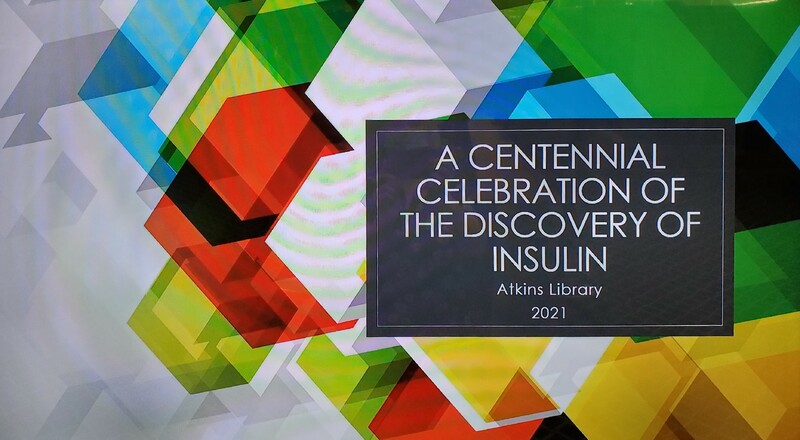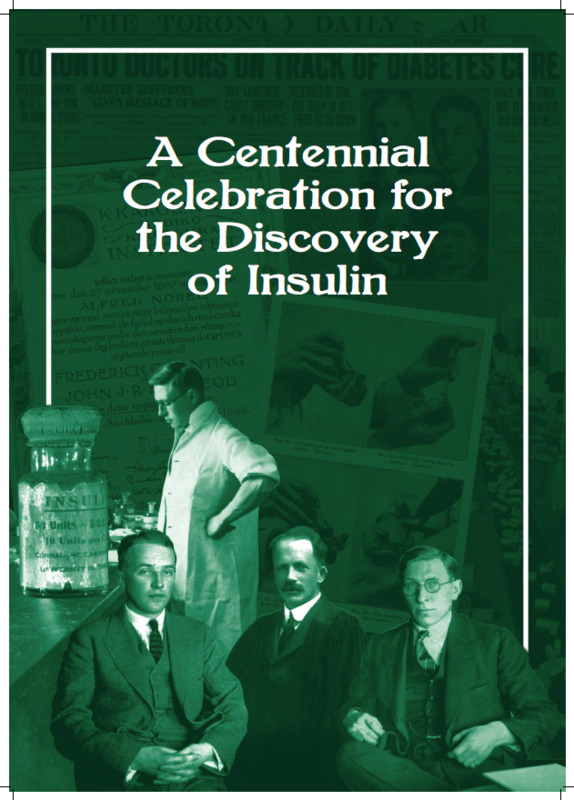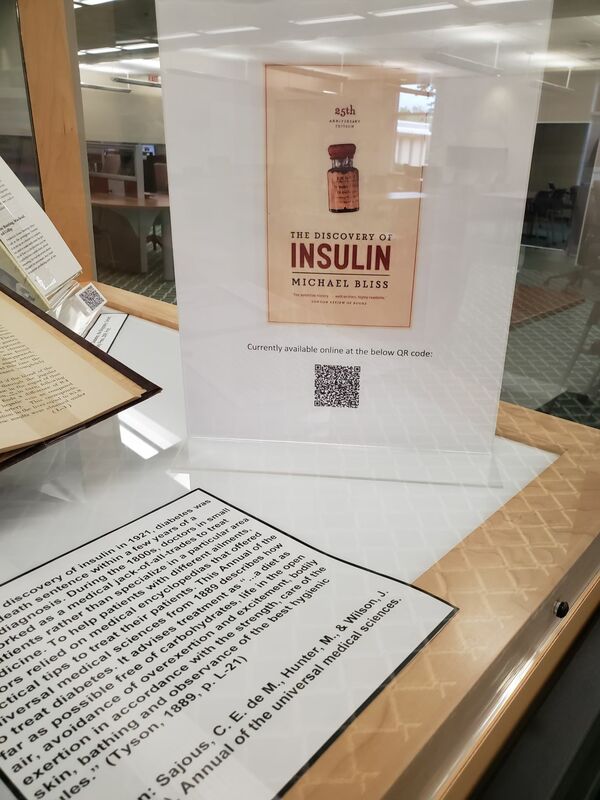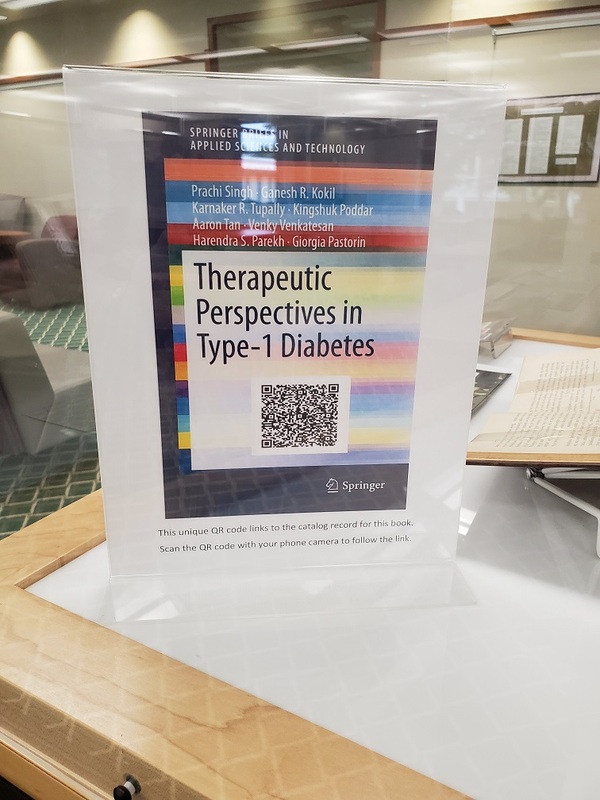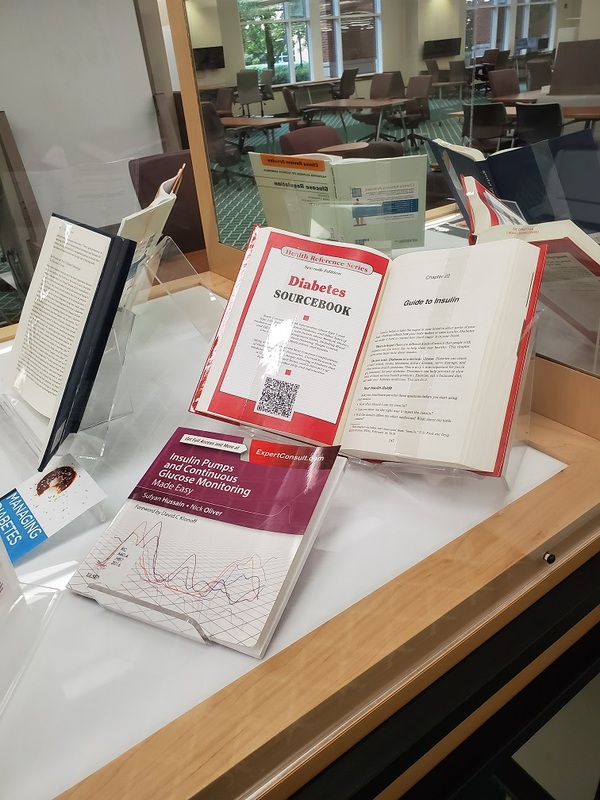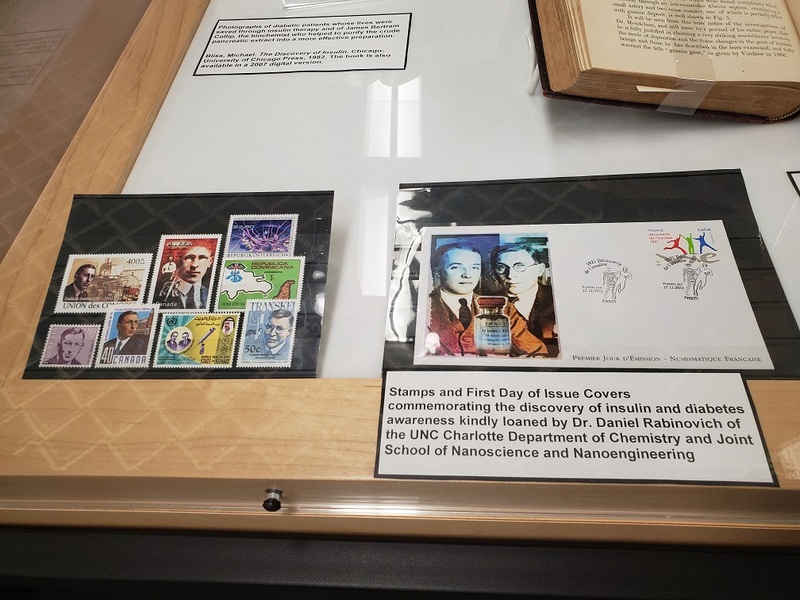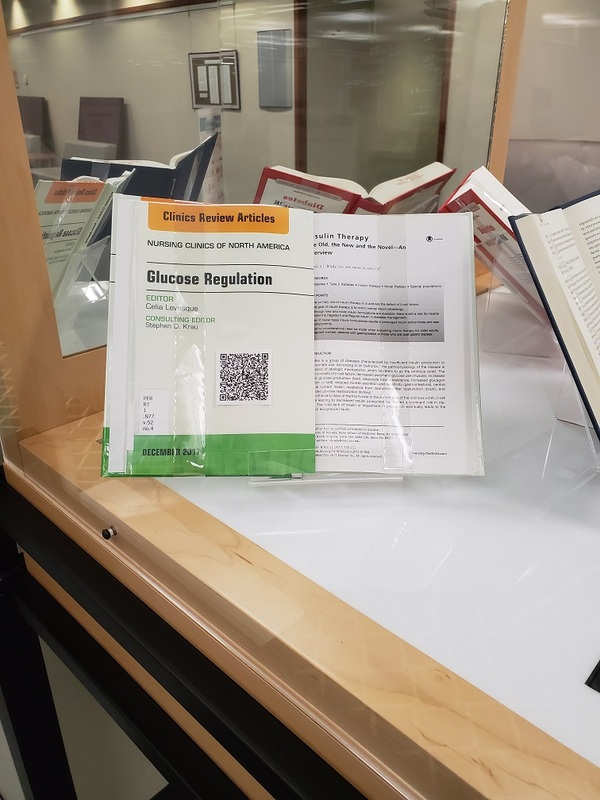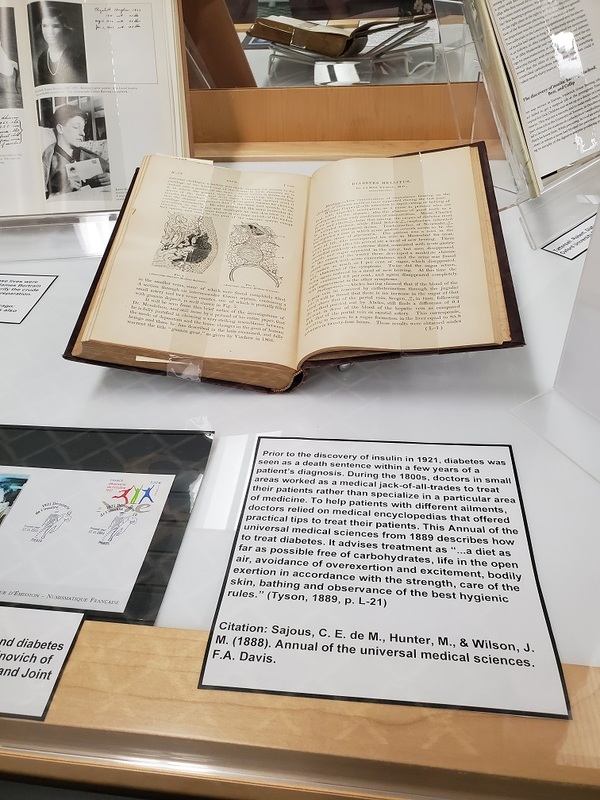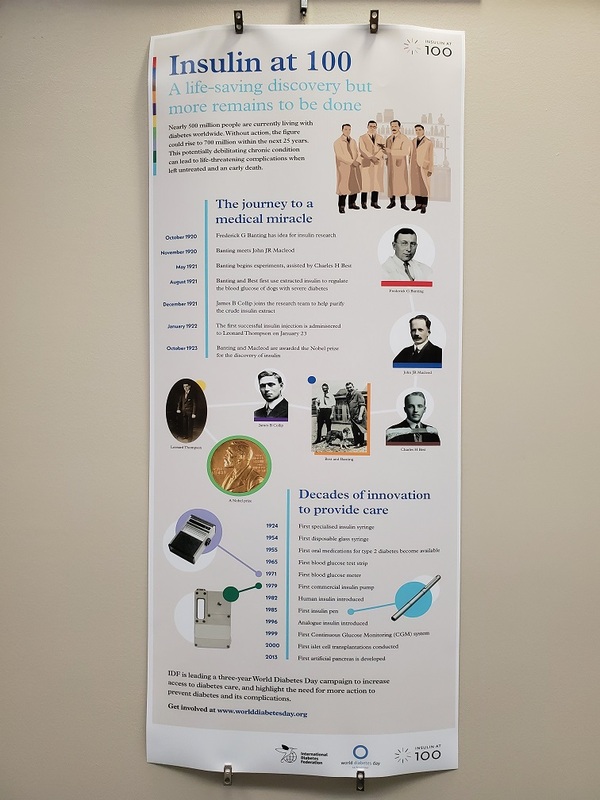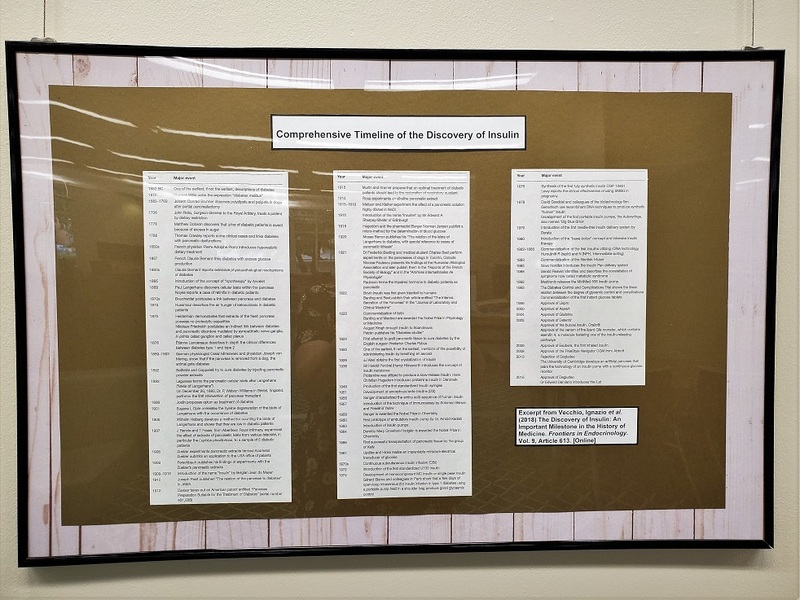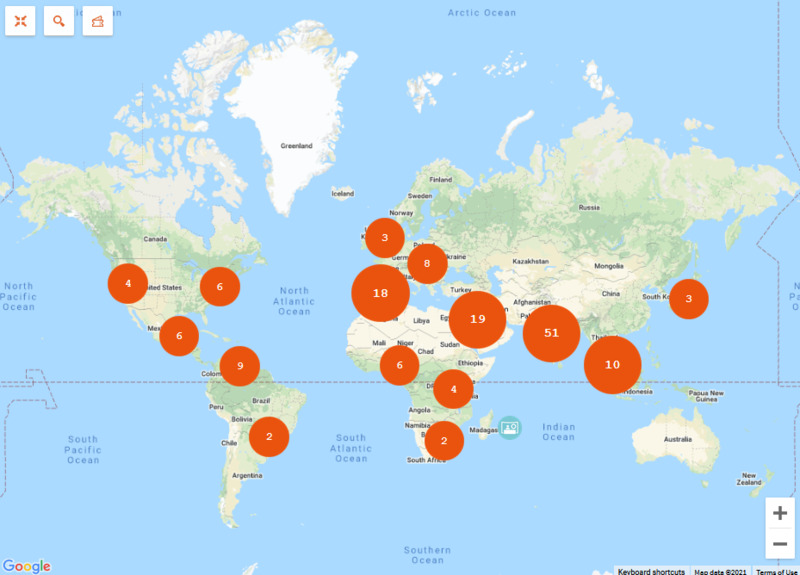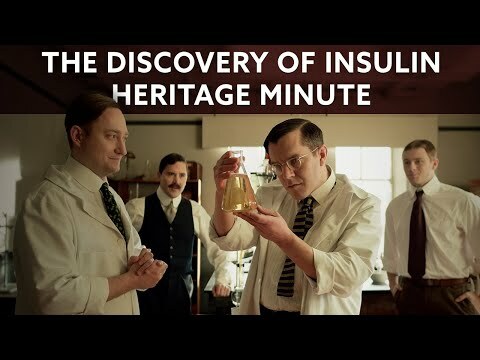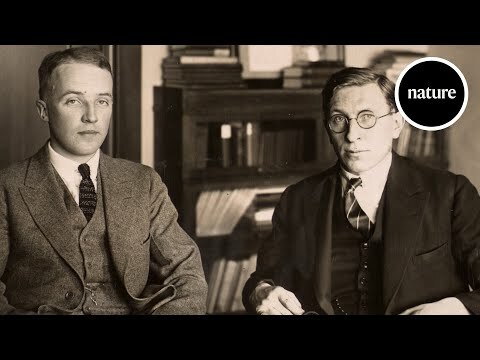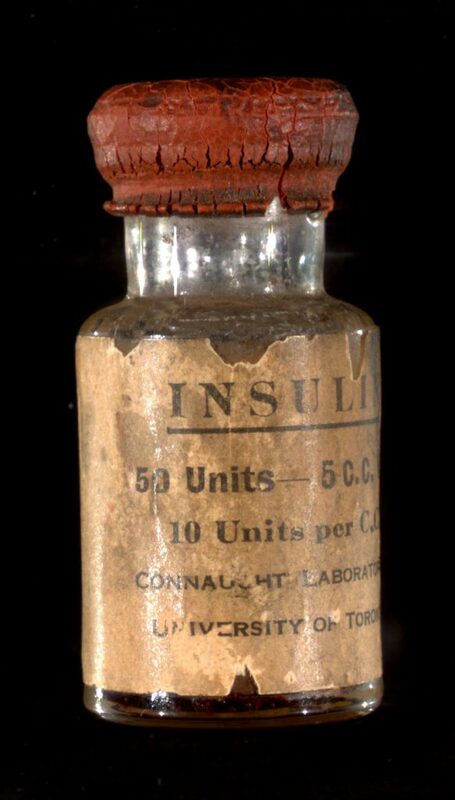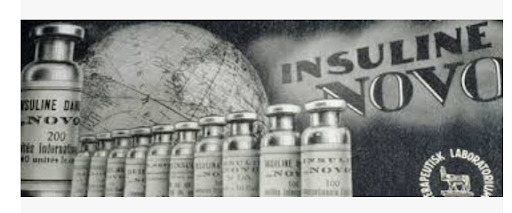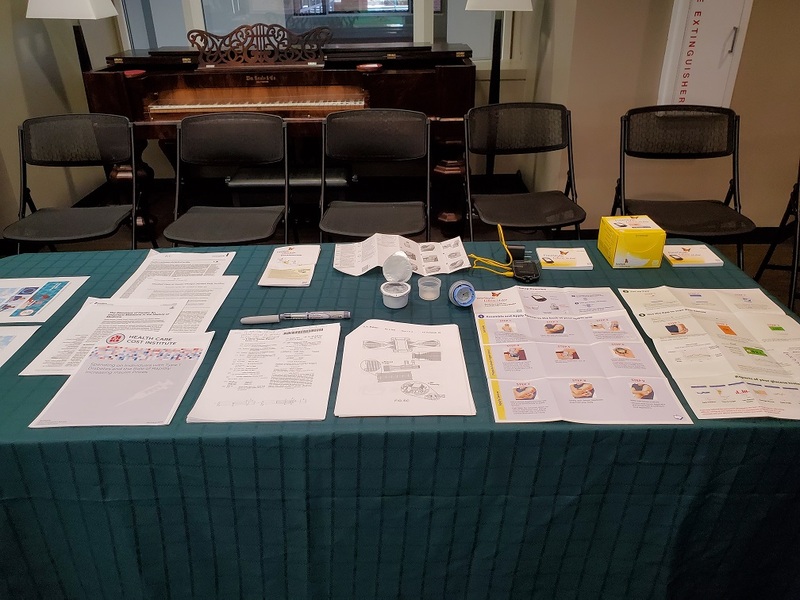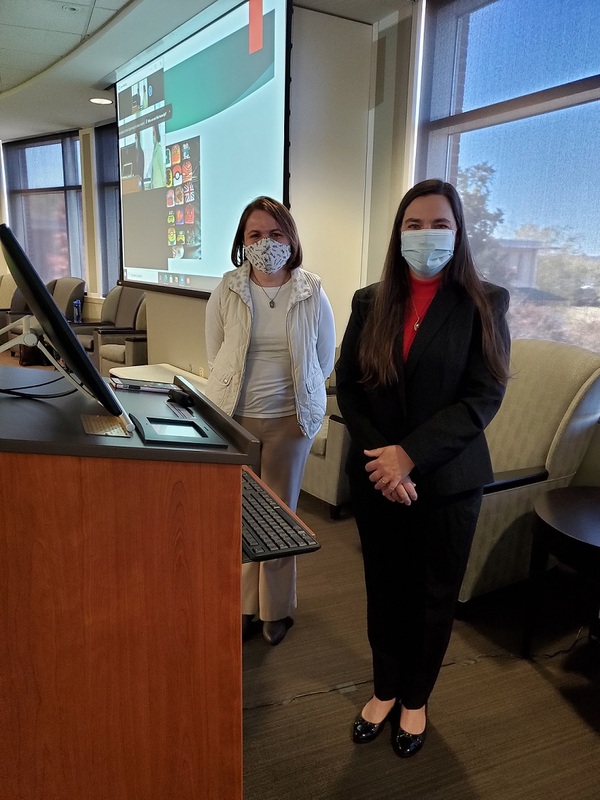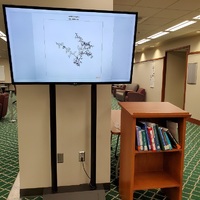Centennial Celebration of the Discovery of Insulin
About the Exhibit
It has been one hundred years since the peptide hormone, insulin, was isolated and purified for the treatment of insulin-dependent diabetes. These breakthroughs were revolutionary because, prior to 1921, a diagnosis of diabetes meant a death sentence for patients within days to a few years. The majority of diabetic patients were children and, in the pre-insulin era, they would have struggled through therapies including different types of hyper-caloric diets or even starvation diets, often leaving the afflicted as semi-invalids.
Canadian surgeon, Frederick Banting, changed the course of medical history when he envisioned experiments to isolate a pancreatic extract associated with diabetes. Banting collaborated with John Macleod, Charles Best, and James Collip, who all made essential contributions at the University of Toronto as they sought funding and continually revised laboratory protocols to improve the quality of insulin. After Banting and Best presented their results to the American Society of Physiology that December, human clinical trials began the following year. The purity and yield of insulin were greatly increased once the pharmaceutical company, Eli Lilly partnered with the university. The dramatic successes realized in patients, whose lives were completely turned around within weeks, established insulin as the global standard treatment for diabetes, and led to Banting and Macleod being awarded the Nobel Prize in Physiology and Medicine on October 25, 1923.
Event
Lunch & Learn for Centennial Celebration for the Discovery of Insulin
When: November 9, 12-1 PM (EST)
Where: Halton Reading Room
Celebrate the Insulin Centennial: A Look at Historical and Current Treatments for Diabetes
Description:
The discovery of insulin in 1921 was a significant breakthrough for patients with insulin-dependent diabetes. Since that time, new technologies have greatly improved the quality of life for millions of people. Come join us on Tuesday, November 9, 2021 from noon until 1:00pm either virtually or in the Atkins Library Halton Room for a Lunch & Learn where Dr. Tonya Anderson will present diabetic management advances, including wearable glucose monitoring devices and wireless insulin patch pumps coupled with mobile apps.
Biography:
Dr. Tonya Anderson is a Clinical Assistant Professor and Advanced Clinical Coordinator in the UNC Charlotte School of Nursing. In addition to her faculty position, Dr. Anderson currently works as a nurse practitioner providing care for individuals with diabetes, as she has done for more than 25 years within her critical care nursing specialty. She has dedicated her research to improving the health of those affected by diabetes.
Links to commercial products identical or similar to the types that will be discussed in the presentation:
The Dexcom G6 CGM System includes a small wearable glucose monitoring device with adhesive that sends real-time glucose readings continuously to the patient’s smartphone or Dexcom receiver, without the pain of multiple fingersticks throughout the day. An alert sounds if the glucose reading is too high or too low. For additional peace of mind, up to ten followers will receive these alerts to ensure the patient can seek appropriate treatment. Indicated for patients two years of age and older.
The FreeStyle Libre Systems use sensors, which are tiny self-applied devices that sit partially beneath the skin and remain on the skin for several days with adhesive. Glucose levels are measured by the sensor at regular intervals and stored. Interstitial fluid glucose data can be accessed through the day using the FreeStyle handheld reader or smartphone app or both. Alarms warn the patient when glucose levels are outside of the target range. The system is designed for patients four years of age or older.
An alternative to traditional insulin pumps, Omnipod is a tubeless, wireless, insulin patch pump that provides continuous insulin delivery for up to 72 hours. The discreet pod allows for insulin injections without tubes or needles. A handheld wireless Personal Diabetes Manager is kept nearby to program insulin delivery. Approved for all ages, the Pod can be worn during bathing or in swimming pools up to 25 feet deep for an hour.
Medtronic InPen with Blue Tooth
Medtronic InPen is a smart insulin pen using a mobile app with a Bluetooth-enabled insulin pen to deliver a precise amount of insulin at the proper time. The system tracks active insulin, calculates insulin doses, sends reminders in the event of missed doses, alerts the patient if the temperature is out of range, and allows for reports to be shared with a healthcare team. This dosing and tracking insulin pen may be used for patients aged seven years and older.
Presentation Recording
Bibliography
Bliss, M. (2013). The Discovery of Insulin (25th anniversary ed.). University of Chicago Press.
Diabetes sourcebook : basic consumer health information about type 1 and type 2 diabetes, gestational diabetes, and other types of diabetes and prediabetes, with details about medical, dietary, and lifestyle disease management issues, including blood glucose monitoring, meal planning, weight control, oral diabetes medications, and insulin ; along with facts about the most common complications of diabetes and their prevention, current research in diabetes care, tips for people following a diabetic diet, a glossary of related terms, and a directory of resources for further help and information (Seventh edition.). (2018). Omnigraphics, Inc.
Flier, J. S. (2019). Starvation in the Midst of Plenty: Reflections on the History and Biology of Insulin and Leptin. Endocrine Reviews, 40(1), 1–16.
Hussain, S. S., & Oliver, N. (2016). Insulin Pumps and Continuous Glucose Monitoring Made Easy. Elsevier.
Levesque, C. M. (2017). Glucose Regulation. Elsevier.
Sajous, C. E. de M. (1888). Annual of the Universal Medical Sciences. F.A. Davis.
Tattersall, R. (2009). Diabetes : the biography. Oxford University Press.
Vecchio, I., Tornali, C., Bragazzi, N. L., & Martini, M. (2018). The Discovery of Insulin: An Important Milestone in the History of Medicine. Frontiers in Endocrinology 9, article # 613–613.
